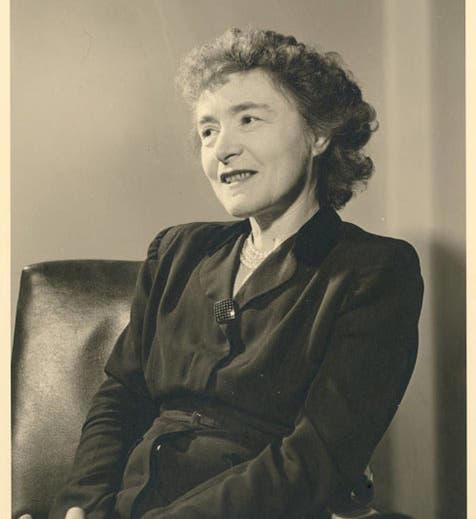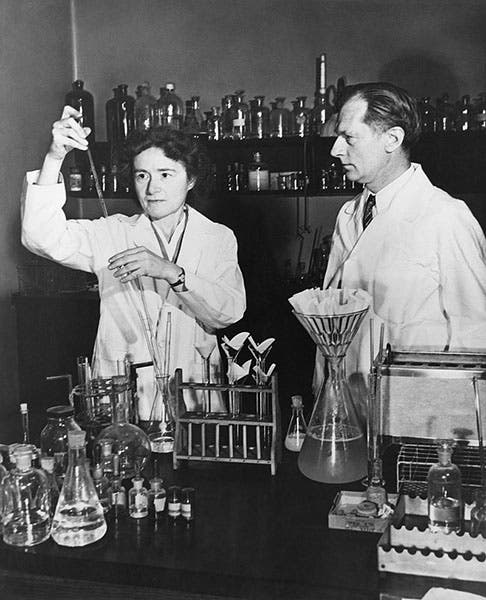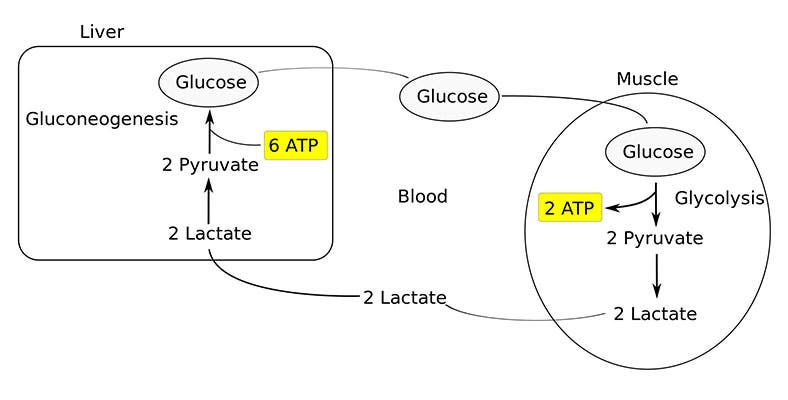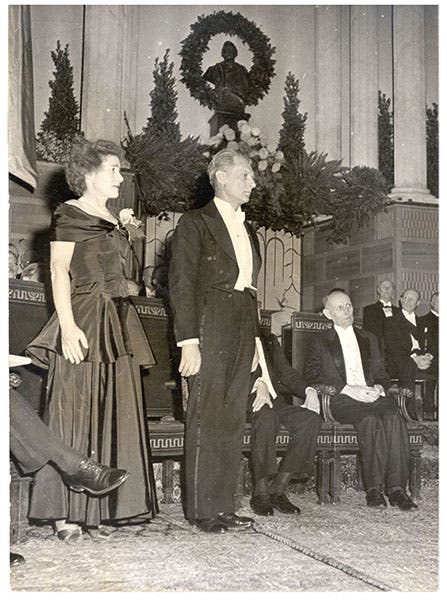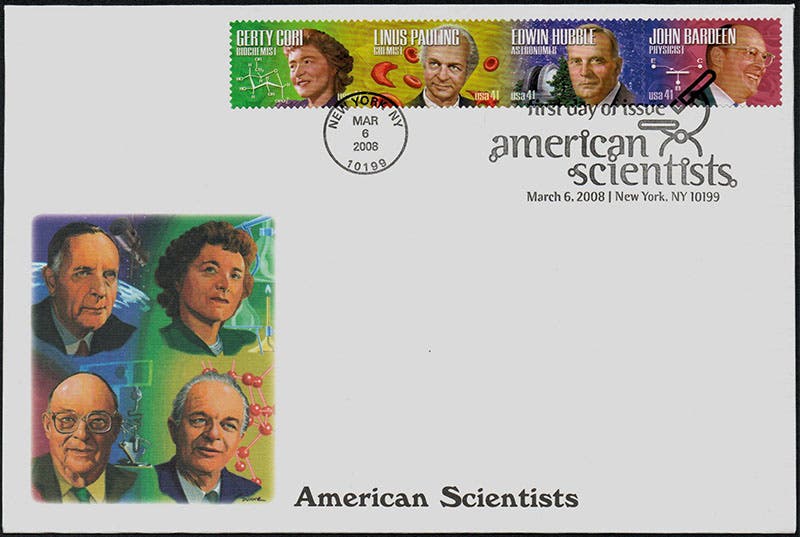Scientist of the Day - Gerty Cori
Gerty Theresa Cori, an Austrian/American biochemist, died Oct. 26, 1957, at age 61. Born Gerty Theresa Radnitz in Prague, she managed to find her way into medical school in Prague, where she met Carl Cori. They married in 1920, and finding post-war Austria a difficult place to work, they emigrated to the United States in 1922, where Carl found a position at the Roswell Park Cancer Institute in Buffalo, New York. Gerty was told she could not collaborate with Carl, but they did anyway, and did so their entire careers. In 1929, the two biochemists discovered the lactic acid-glucose cycle, now called the Cori cycle, whereby glucose is converted to lactic acid in the muscles, and lactic acid is converted back into glucose in the liver. It was a major step in understanding the metabolism of carbohydrates. And the two were now U.S. citizens, having taken their oaths of allegiance in 1928.
In 1931, Gerty and Carl received appointments at Washington University in St. Louis, where Gerty would work until her death in 1957. Gerty's initial appointment was as a lowly-paid research assistant, and she had a difficult slog working her way up the academic ladder. The two continued to try to unravel the mysteries of glucose metabolism. One of their important discoveries was a compound, with a long chemical name but, thankfully, usually called the “Cori ester,” which catalyzes the conversion of glycogen into glucose, and vice versa. In 1945, physicist and Noble laureate Arthur Holly Compton became Chancellor at Wash U, and I would not be surprised if he had some influence in making sure that Gerty was promoted to full Professor in 1947 (Carl had started out at Wash U as a full professor of pharmacology). It is doubtful that Compton had any pull with the Nobel Prize committee in Stockholm, but shortly after she was promoted, she and Carl were awarded half of the Nobel Prize in Physiology/Medicine, with the other half going to the Argentinian Bernardo Houssay for discovering the role played by a pituitary hormone in metabolizing glucose. Gerty and Carl were not particularly photogenic, noticeably stiff before the camera, but the Nobel Prize ceremony photo is a jewel (fourth image).
Gerty died in 1957 of a rare and fatal bone-marrow cancer – she learned about the cancer just before receiving the Nobel award. She was only 61 years old. Gerty was for decades regarded as the lesser half of the Cori twosome, because that's the way people used to regard a woman scientist who worked with her husband. That has changed, and the struggles Gerty went through and the unequal pay she received for decades has made her something of a hero to those working for equal rights, pay, and recognition for women scientists.
In 2008, the U.S. Postal service issued the first set of four stamps in its American Scientists series, with the stamps honoring Gerty Cori, Linus Pauling, Edwin Hubble, and John Bardeen, which is pretty good company for a woman ignored for so many years. The stamp honoring Cori included a chemical diagram of the Cori ester. Unfortunately, they got the formula wrong on the stamp. To the credit of the USPS, they simply owned the mistake and issued it anyway, since it really doesn’t make any difference to most of us if one bond is misplaced. We show a first-day cover that contains all four stamps (fifth image). Undenominated “Forever stamps” had just been introduced by the USPS, but the initial American Scientists series was given a denomination of 41 cents. Those on the second series of 2011 were identified as Forever stamps. Gerty missed being a Forever stamp by just THIS much. Sometimes it doesn’t pay to be first (see our post on Maria Goeppert Mayer for more on the second series of American Scientists stamps).
Gerty and Carl (who died in 1984) are buried under a very simple stone in Bellefontaine Cemetery, St. Louis. Their son donated their Nobel Prize medals to Washington University, where they (or rather replicas of them) are on display in the medical library. In 1994, the Coris were awarded a star on the St. Louis Walk of Fame (sixth image). The star is at 6605 Delmar Boulevard, right next to that of Chuck Berry, not too far from those of Charles Lindbergh and Charles Eames, and three blocks west of the star of Arthur Compton, the Chancellor at Wash U who may have made the Coris’ Nobel Prize possible. You can see Compton’s star at our post on Compton.
William B. Ashworth, Jr., Consultant for the History of Science, Linda Hall Library and Associate Professor emeritus, Department of History, University of Missouri-Kansas City. Comments or corrections are welcome; please direct to ashworthw@umkc.edu.

